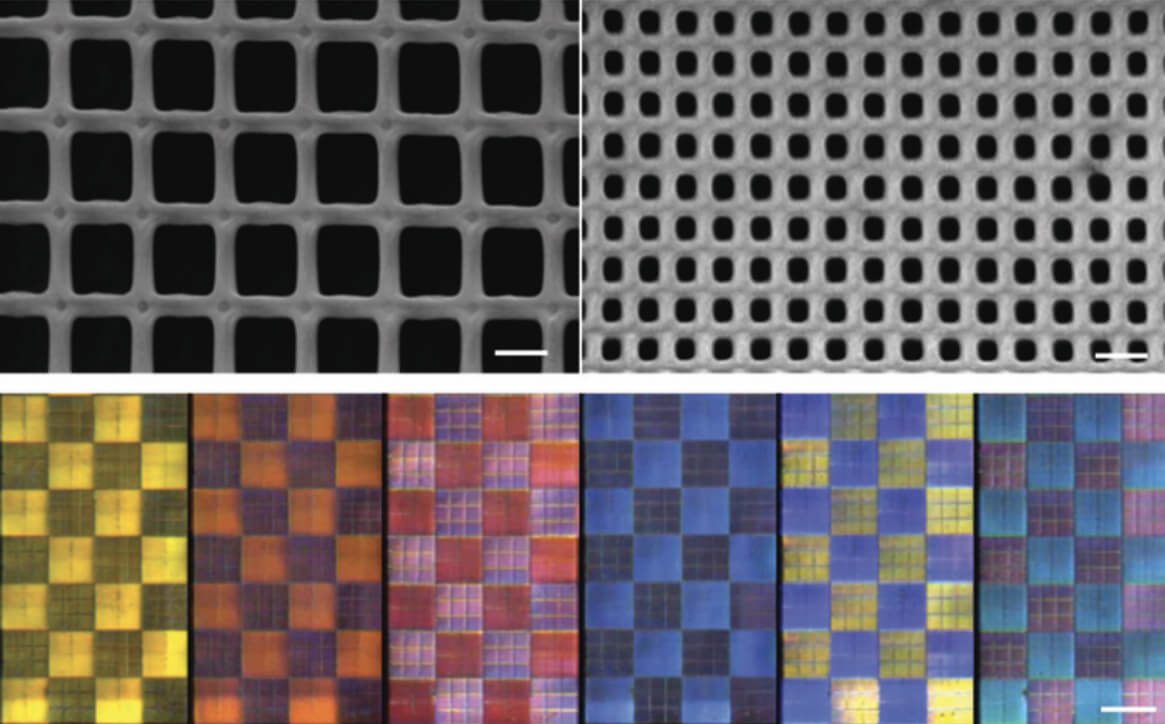A team of researchers from Trinity College and AMBER (SFI Research Centre for Advanced Materials and BioEngineering Research), both in Dublin, Ireland have successfully printed microscopic gas sensors which mimic color change mechanisms seen on peacocks.
The findings have been published in a paper titled “Direct laser writing of vapor-responsive photonic arrays” in the latest Journal of Materials Chemistry.
As you can guess by the title, the sensors respond optically to traces of gas in an environment, meaning that they can be deployed in scenarios where human health and safety may be of concern.

The sensors, which were printed with a direct laser-writing method of printing, consist of thin plastic plates which swell as they are exposed to various vapours.
As the plates swell the transmission of light through the part results in a perceived change of color. The small plates can be used in pixelated arrays, as you can see in the image above. The colors and sensitivity can be changed by varying the height of the arrays, and the paper explains that the biggest changes in color were seen from the specimens of a taller height.
According to the paper, the specimens also returned to their default colors after the gas flow had been switched off, so they have the potential to be reused it would seem.
The printed sensors potentially offer a low power, low cost, and high sensitivity alternative to current instruments, which require all manner of sensors and data processing in order to convey the status of the sensor.
“We spend the majority of our lives inside our homes, cars, or work environments. Models suggest that the concentration of pollutants can be anywhere from 5-100 times the concentration found outside,” said Larisa Florea, a professor at Trinity College and AMBER.
“These pollutants can be influenced by ambient air, chemical presence, fragrances, food quality, and human activity and have a profound effect on our health.”
This is why the sensors can potentially find application in human health and wellbeing.
As mentioned previously, the method is similar in how a peacock feather changes color as it bends and moves. Many creatures (or plants) in nature depend on color pigmentation for their coloration. However, animals such as peacocks or certain species of butterfly alter color physically, by changing the surface geometry of their coatings, which causes light to reflect/refract at different wavelengths. The researchers measured the transmission spectra and confirmed this.

“More than 300 years ago, Robert Hooke first investigated the vibrant colors on a peacock’s wing. Only centuries later did scientists discover that the effervescent coloration was caused not by traditional pigments but by the interaction of light with tiny objects on the feather, objects which were just a few millionths of a meter in size”, saidDr. Colm Delaney, Lead author of the journal article.
“We have taken this biological design, seen all the way from a magpie to a chameleon, to make some really exciting materials. We achieve this by using a technique known as Direct laser-writing (DLW), which allows us to focus a laser into an extremely small spot, and to then use it to make tiny structures in three dimensions from the soft polymers which we develop in the lab.”
You can read the full paper (via open access) over at this link right here, if you would like more information about the research.

